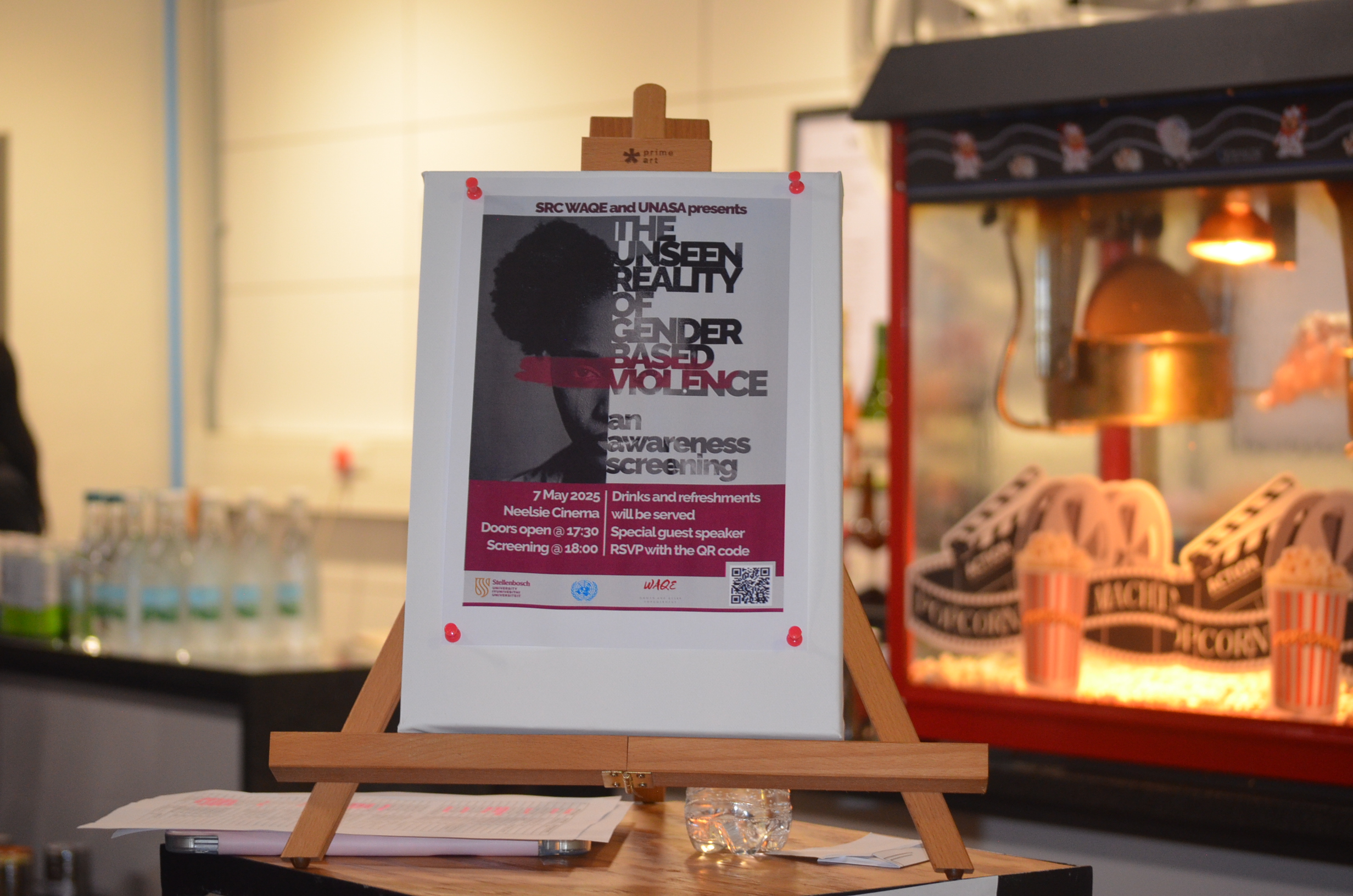BY SLADE VAN ROOYEN
Climate change, transformation and chenin blanc were all on the table when Die Matie sat down with Dr Erna Blancquaert to discuss her recent achievement and the future of the South African wine industry. Blancquaert had just returned from London after having been awarded the inaugural Taylor’s Port Golden Vines Diversity Scholarship on 7 October.
A lecturer and researcher in the department of viticulture and oenology, Blancquaert was one of only two recipients of a £55,000 scholarship to participate in the Master of Wine programme, and attain what is widely considered to be one of the foremost qualifications in the field. The Golden Vines Awards Ceremony and Dinner at which Blancquaert received the scholarship, attended by the likes of Kylie Minogue and Ronan Keating, raised a total of £1.2 million. According to Blancquaert, the funds will be used to finance numerous projects worldwide aimed at improving diversity in what she describes as a “monotone” industry.
The Master of Wine programme takes a minimum of three years to complete and covers both theoretical and practical aspects of the wine industry. The theory component of the final exam comprises five papers, namely: viticulture, vinification and pre-bottling techniques, the handling of wine, wine business and contemporary issues; whilst the practical component is made up of three papers, each of which requires examinees to identify twelve wines in a blind tasting. There is also a research component that consists of a 10 000-word report based on the examinee’s original research. According to the Institute of Masters of Wine, only 496 people have passed the exam since 1953, with 419 people from 30 countries currently holding the title of being Masters of Wine.
Blancquaert’s interest in the field was first piqued by her curiosity when reading descriptors such as “cherry, plum or tobacco” on wine labels, flavours that she initially struggled to perceive when tasting wine. “What excites me most [about the programme],” says Blancquaert, “is being able to obtain an in-depth knowledge of the entire value chain and being able to incorporate it in the undergraduate modules I present.”
The primary field of Blancquaert’s research is the impact of climate change on grape production, with a particular focus on a ripening disorder known as berry shrivel, which causes “higher sugar levels, shrunken berries, and lower acidity”, complicating the extraction process and leading to unbalanced wine. “Essentially, what I’m trying to achieve with my research is to make better grapes in the vineyard, so as to make less work for the winemaker in the cellar,” explains Blancquaert.
As the first woman of colour to earn a PhD in Viticulture on the African continent, Blancquaert believes that the South African wine industry still has a long way to go to achieve meaningful transformation. The country’s historical context has created a stagnant industry with “little space for innovation,” she says. “Grandpa made this wine this way, [so] this is how we’re going to make it.” Blancquaert asserts that ingrained mindsets like this one can be changed if winemakers come to understand the value of uplifting their communities, and hopes that she “will be able to inspire and assist the future generation of [minority] graduates in the South African wine industry”.
Blancquaert looks forward to the opportunity to engage in part-time study again and to gain exposure to some of the finest wines produced worldwide. “After being spoilt with some phenomenal wines at last week’s function, I think I’ve become a wine snob,” she laughingly confesses while describing the bitter, unbalanced flavour of a Turkish red wine she sampled on a recent flight.
“Quality is very subjective, and what is most important is that the consumer likes what they drink.” Nevertheless, Blancquaert advises aspiring wine connoisseurs to pay attention to colour, aroma and taste when sampling wine. “White wine, depending on the style or cultivar, should have a light yellowish colour … If [red wine] has a brick colour, you know it’s an older wine. Then the aromas will tell you if it is an aged or a young wine.” With regard to taste, “normally younger wines have high acidity, and older wines have low acidity”.
For those seeking to sample some of the best wines the Stellenbosch valley has to offer, Blancquaert recommends Neethlingshof, Beyerskloof, and Uva Mira, which, at 620 metres above sea level, affords visitors unspoilt views of the ocean and the valley from the tasting room.
Apart from a good chenin blanc, which she describes as “sunshine in a glass”, Blancquaert’s passion is uplifting her students. While admittedly nervous about participating in a world-renowned programme, she looks forward to “flying the flag high for South Africa” on the world stage, honing her skills and sampling new wines. “Each wine is different… That is what makes this field intriguing. Never a dull moment.”



